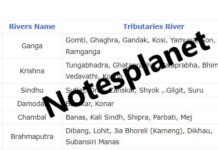Maratha Empire
The Marathas rose to power under Shivaji. He had been born in Shivner Fort at 1627. His dad was Shahji Bhonsle and mother was Jijabai. The Bijapur Sultan delivered Afzal Khan from Shivaji, but he had been murdered by Shivaji at 1659.
Shaista Khan, was sent by Aurangzeb against Shivaji. Shaista Khan defeated and caught Poona from Shivaji. However, Shivaji made a daring assault on Shaista Khan and plundered Surat and Ahmednagar.
Raja Jai Singh of Amer was delivered by Aurangzeb to put down Shivaji in 1665. He triumphed in besieging the Fort of Purandar and started discussions with Shivaji. The Treaty of Purandhar was signed in 1665, based on that, Shivaji had to concede 23 forts from 35 temples held by him to Mughals. The remaining temples must be abandoned to Shivaji on condition of support and devotion to Mughal emperor. When Sivaji seen Agra, he had been imprisoned there. Shivaji run away from Agra and began Military preparations. Then he captured all of his lost territories from the Mughals. In 1674, he assumed the name of Chatrapathi. He conquested Karnataka during 1677-80 before his departure.
rule under Shivaji
He was a fantastic administrator. He needed a council of ministers known as Asthapradhan. Each minister was directly responsible to Shivaji. He split the Maratha territory into three states under a viceroy. Provinces were subsequently divided into prants, further subdivided into Paragans. The smallest component was village, headed by Patel.
The ministers in Shivaji’s council of ministers:
- Peshwa: Initially finance and general management. Afterwards became prime minister.
- Sar-i-Naubat or Senapati: Military commander.
- Majumdar(Amatya): Revenue and balances
- Waqenavis(Mantri): Intelligence, postand home affairs.
The majority of the administrative reforms of Shivaji were modelled on clinics of Deccan Sultanates.
The revenue system beneath Shivaji was founded on that of Malik Amber of Ahmednagar. The land assessment was finished through Kathi. Three kinds of land was categorized – Paddy areas, Hilly tracks and garden lands. Shivaji made his own earnings officers called as Karkuns, while diminishing the forces of existing deshmukhs and kulkarnies.
Following passing of Shivaji, a war of succession happened between Shanbaji and Rajaram, his own sons. Shambaji won, but afterwards captured and murdered by Mughals. Rajaram usurped the throne but Mughals made him flee Ginjee fort.
Balaji Vishwanath(1713-1720 AD)
He was the first Peshwa. He left the article of Peshwa hereditary. Balaji vishwanath gained particular rights from Mughal emperor Farukh Siyar. Firstly the Mughal emperor recognized Shahu since the Maratha king. Secondly, he enabled Shahu to collect chauth and Sardeshmukhi from 6 Mughal states in Deccan.
Balaji Rao I(1720-1740 AD)
The Maratha power reached its zenith under him. He started the Confederacy among Maratha chiefs. Under the system of confederacy, every Maratha chief has been assigned a land which was administered . Hence, many Maratha families gained prominence. They were:
- Gaekwad at Baroda
- Scindias in Gwalior
- Bhonsle in Nagpur
- Peshwas at Poona
- Holkars at Indore
Balaji Baji Rao succeed his father as Peshwa Baji Rai I. Together with Sahu perishing without any issues, along with other nominated successor Ramraja in Satara prison. Balaji Baji Rao became the only controller of Maratha kingdom. He entered into an arrangement with the Mughal emperor Ahmed Shah in 1752, dependent on the Peshwas would shield the Mughal empire from internal and external threats. Because of this, the Marathas would collect Chauth from beachfront states together with the whole revenue coming from Ajmer and Agra.
Even though Marathas emerged as a substantial power after decline of Mughal empire, they weren’t able to succeed in preventing the institution of British power in the country. This occurred mainly because of lack of unity among Maratha families. Other aspect that assisted in establishment of British power in India has been their superior artillery and army.
Maratha Wars:
1st Anglo — Maratha War ( 1775AD-1782AD)
The British fought favour of Peshwaship into Raghunath Rao.. The English (beneath Hastings) were defeated by the Marathas. They had to Signal the Convention of Wadgaon in 1779, That was Embarrassing for the British. The English later signed the Treaty of Salbai at 1782 where they renounced their origin of Peshwaship for raghoba.
2ndAnglo – Maratha War ( 1803AD-1806AD )
Other Maratha chief who were a part of Maratha confederacy, were not happy because of this arrangement. The Scindias of Gwalior began the war against the British but they had been conquered by the British.
3rd Anglo – Maratha War ( 1817AD-1818AD )
It’s also referred to as Pindari war. Lord Hastings was decided to emphasise British paramountcy in India. Hastings moved against Pindaris That transgressed the sovereignty of the Maratha chiefs along with the war Began. The Marathas were defeated.









